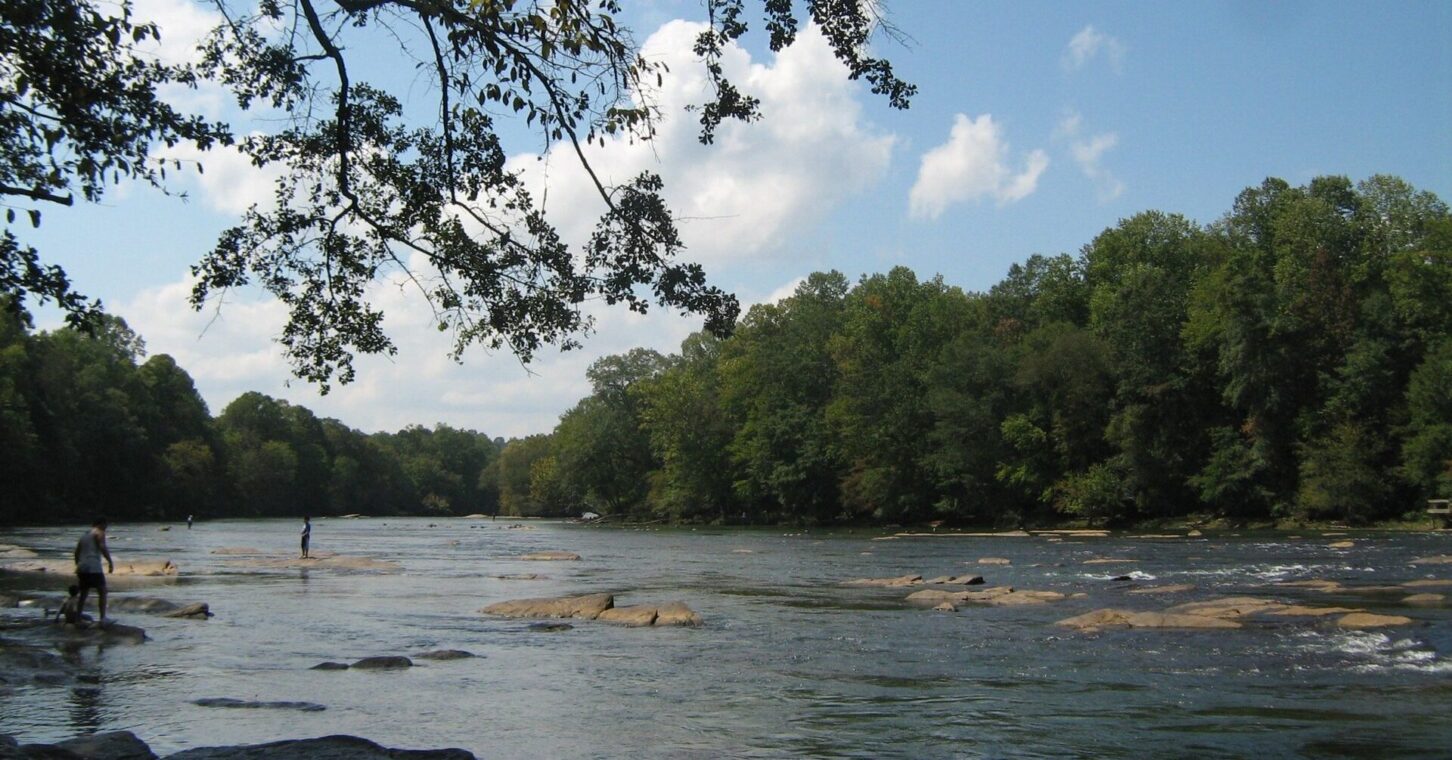
’Tis the season to speak of “Peace on earth, and goodwill toward men.”
And lo, in the time of Kemp governor of Georgia and Ivey governor of Alabama, there came a decree announcing an end to war over the Chattahoochee. The Army Corps of Engineers beat their swords into boat propellers. And there was peace in the lakes, er, land.
If such allusions feel inappropriate for a story about a lawsuit over river water, considereth not only the season. It merely feels like Methuselah was still living when the “water wars” between Georgia and its neighbors began. And the plague of dryness that threatened to afflict our state without a fair resolution might have been one of biblical proportions.
It’s appropriate, because this is a veritable Christmas miracle.
To recap: This past week, Gov. Brian Kemp and his counterpart in Montgomery, Gov. Kay Ivey, unveiled an agreement to end Alabama’s lawsuit over the Mid- and Lower Chattahoochee River Basin. That lawsuit was filed in 2017, but it’s part of litigation dating to 1990.
Rarely during those three-plus decades has a resolution seemed so close at hand.
Partway through the saga, in 2009, a federal judge gave Georgia just three years to stop taking Atlanta’s drinking water from Lake Lanier. At issue were the flows of the Apalachicola-Chattahoochee-Flint river system that flows from that lake, and its effects downstream on people and businesses in Alabama and Florida. Had it been implemented, the ruling decried locally as “draconian” could have decimated metro Atlanta – which, in some respects, is exactly what our rivalrous neighbors sought.
That ruling was overturned by the 11th U.S. Circuit Court of Appeals, and 12 years later the U.S. Supreme Court unanimously ruled against Florida’s lawsuit claiming improper management of the river system had ruined the oyster industry in Apalachicola Bay.
Now comes the pact with Alabama. It still must be approved by the Corps, and even then not all of the battles in these water wars will be over. Environmental groups are still suing over the water flowing into Apalachicola Bay, and Alabama is still pursuing litigation against Georgia related to the Alabama-Coosa-Tallapoosa river system downstream from Allatoona Lake.
That said, it’s a huge step forward.
I mentioned earlier that our neighbors wanted to cripple metro Atlanta, and that bears further explanation. It’s not so much that they hate that region and its people, but that cities in those states sought to boost their own competitiveness by harming Atlanta’s.
You probably don’t spend much time thinking about access to water, but it’s a key element of an area’s development. That’s obvious looking at older cities, so many of which were built alongside rivers or other natural bodies of water, but we’ve come to take it for granted in contemporary times. Most of us simply turn a faucet and water is there.
Farmers spend a lot of time thinking about water, and their needs for, and usage of, water have been every bit as much under the microscope during these water wars as the city folks’. Agriculture remains Georgia’s largest economic sector, and access to water is crucial to maintaining it.
Yet, the kinds of things we take for granted are often the ones that are most foundational – and cause the most havoc when they go missing. Sentencing the Atlanta region to its non-Lanier water sources would have been devastating. The area could not have sustained the growth it has enjoyed since then, much less attract new residents and employers. Farmers also would have suffered.
Winning in court was paramount, but so was guarding against the worst-case scenario. Water conservation has become a priority in metro Atlanta. That’s how the area has reduced water usage even as its population has grown, according to the Atlanta Regional Commission.
In the end, or the end of this chapter, the spirit of cooperation won out. Both states found a way to do right by their people. What a gift for all, in this season of giving.
